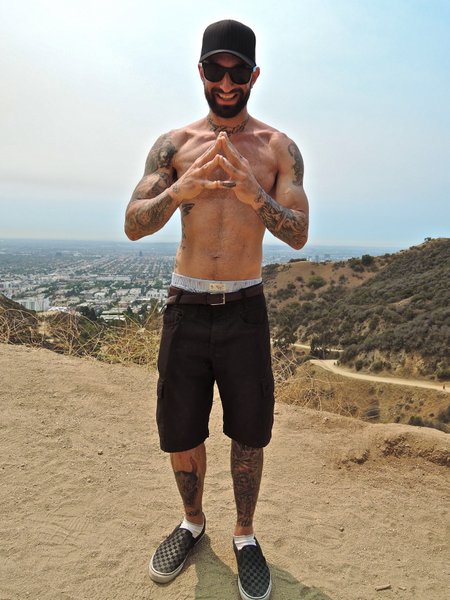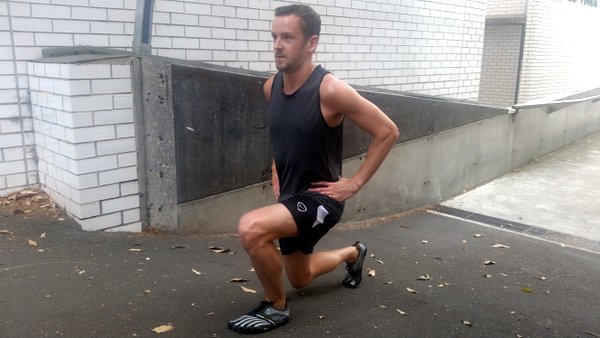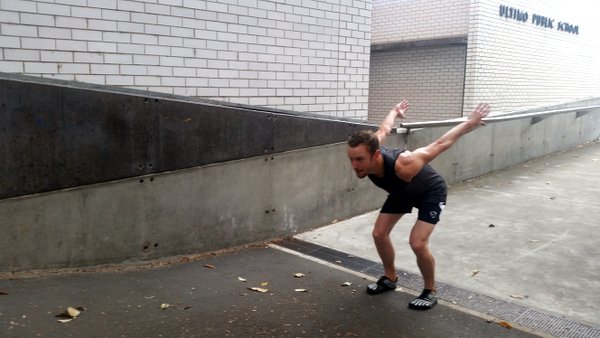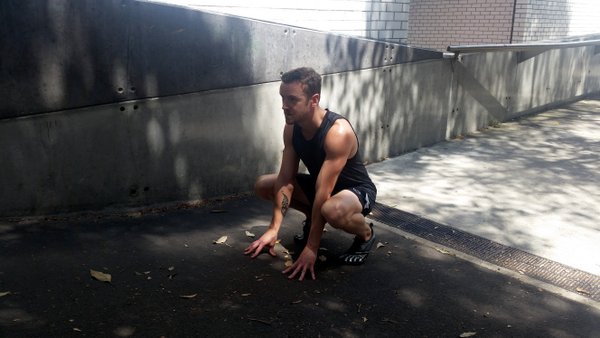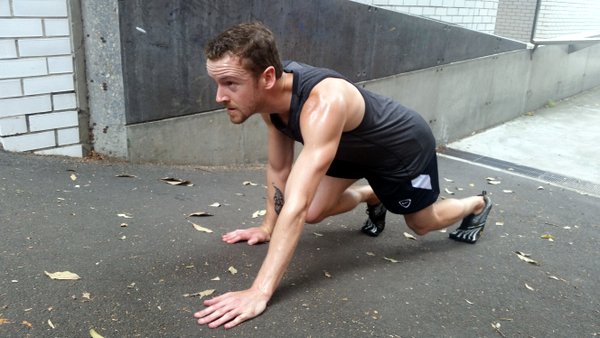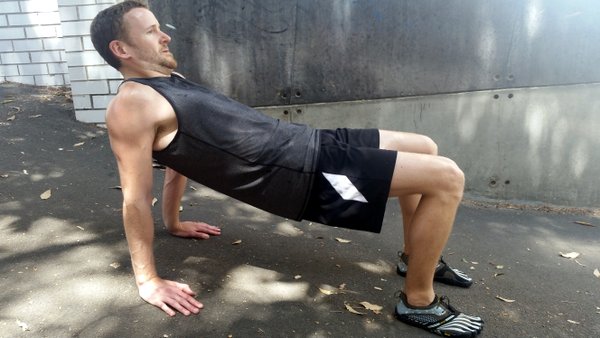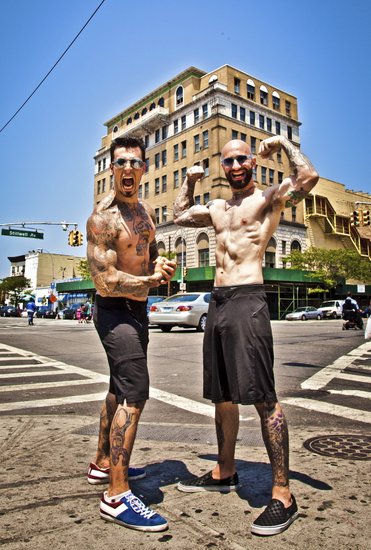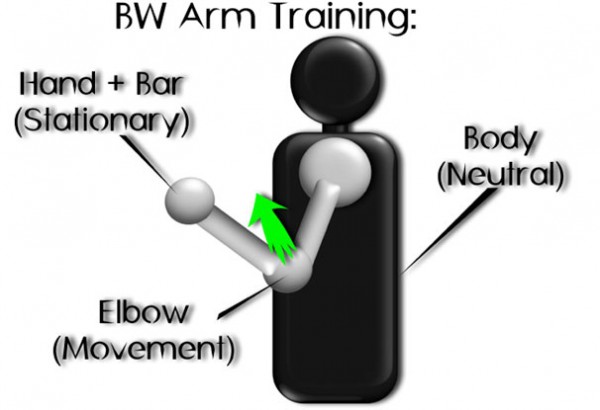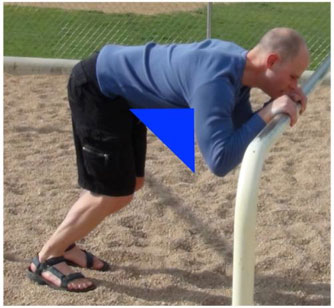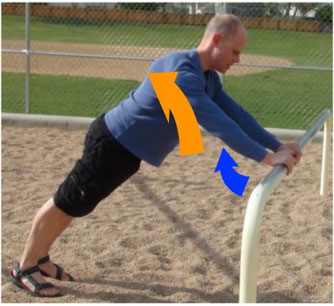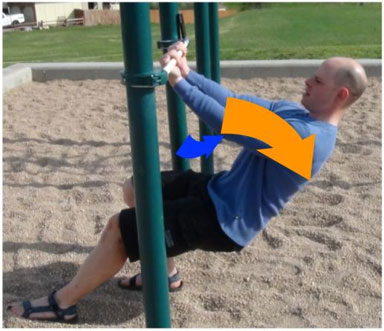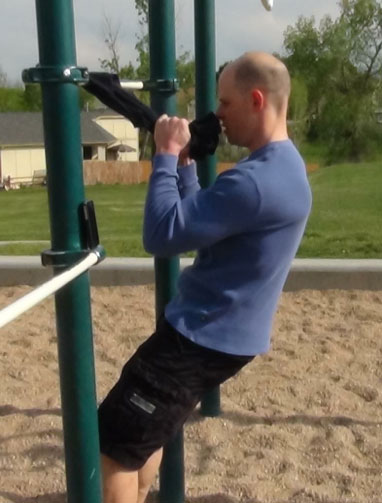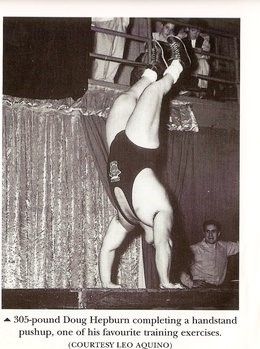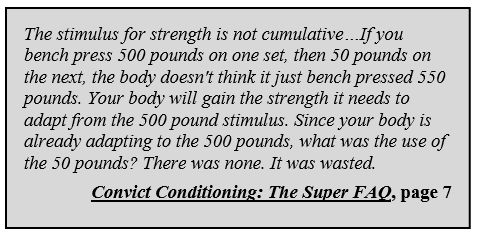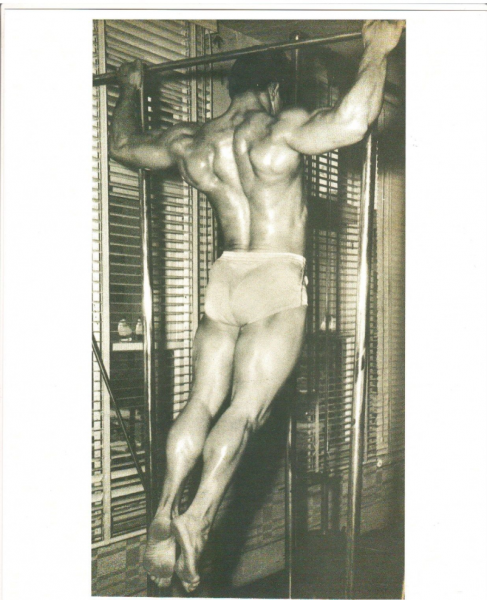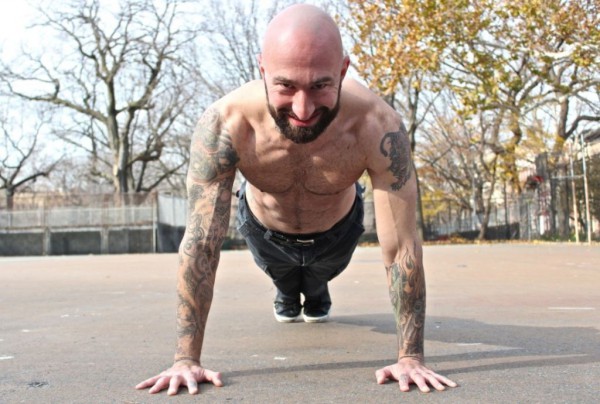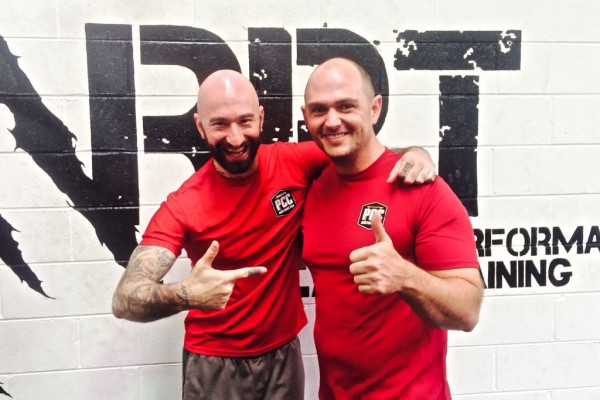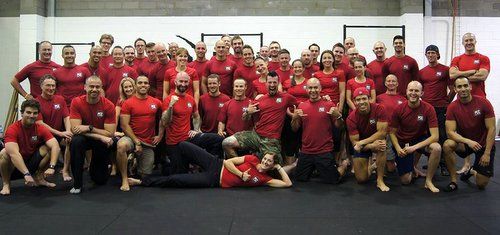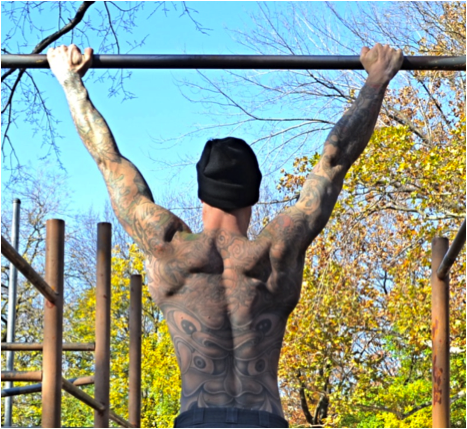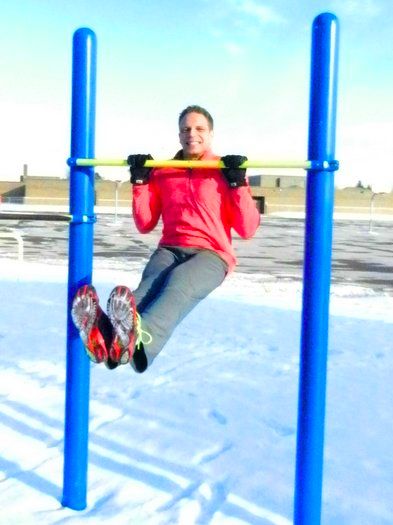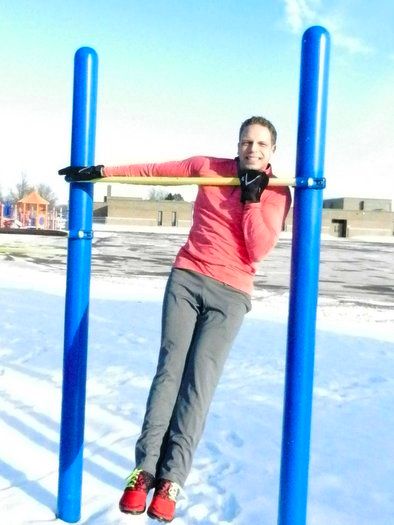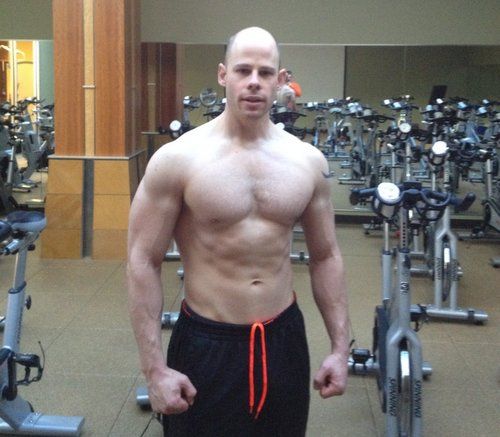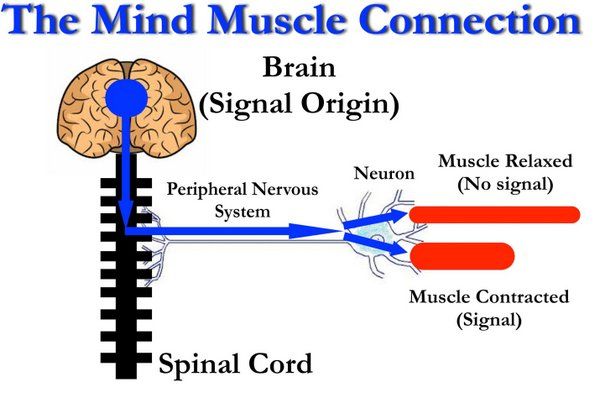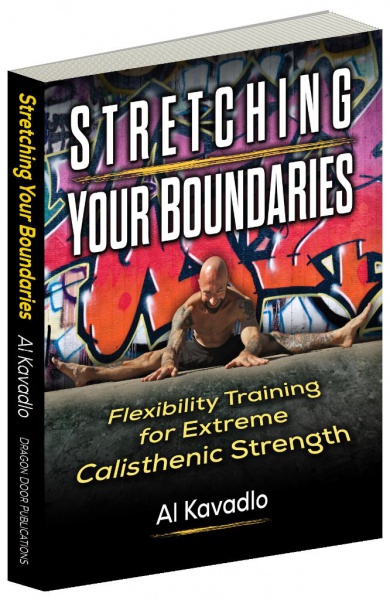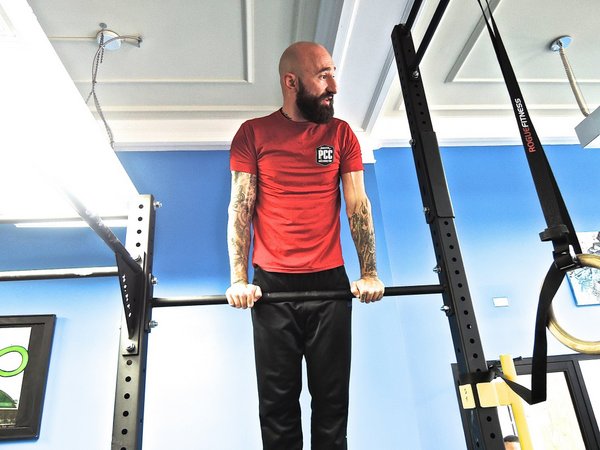
“The body is the subconscious mind.” Dr. Joe Dispenza
At the recent Milwaukee PCC workshop, Danny and Al Kavadlo talked a lot about the importance of the mind and body being one for the success of movement. Danny talked about his belief that the mind and body are not separate, but rather one kickass force of energy. After all, how can you pop up into a flagpole when you’re thinking about filing taxes?
After the Milwaukee PCC, I asked Al if he meditates (no need to ask Danny, he’s got a tattoo of Buddha on his belly!). Al replied, “Calisthenics movements are meditative.” He’s right. If you’re going to achieve a complex calisthenics move, you need to be that move. Calisthenics is profound because you become those movements: you become a human flagpole, a pull-up or a pistol squat. There are no weights, belts or rules to hide behind. The movements are so simple yet extremely advanced and the results are invigorating.
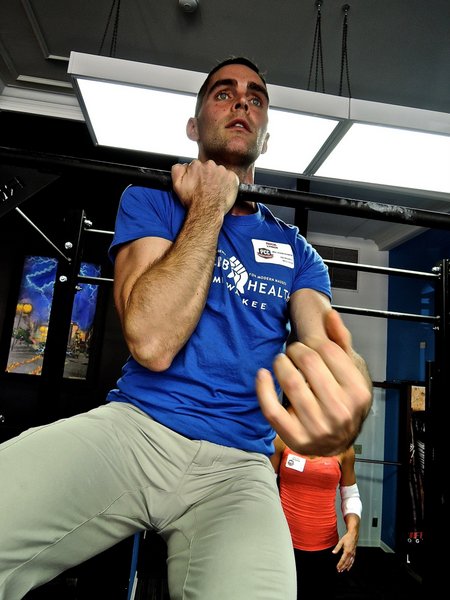
The beauty here is that you have to dedicate all of your focus and intention on each movement. To balance on one hand or perform a single arm pull-up hold, you’ll need to trigger all the smallest, most tedious muscles you never knew you had. The mental requirements of calisthenics are profound. Your brain waves become organized and simple: you quickly slip into Alpha brain waves or ‘The Zone’, as we call it in the world of sports.
Most of us live in sustained, high Beta brain waves; we’re over-trained. This comes from too much caffeine, too much stimulation and too much work while we simultaneously neglect our nourishment and recovery time. Calisthenics will require your brain to slip into Alpha waves. The same waves one rides during deep meditation. When we surf the Alpha waves we tend to function better under stress. We allow the subconscious mind to take over and since the subconscious mind is the body, we allow our body to perform with total freedom!
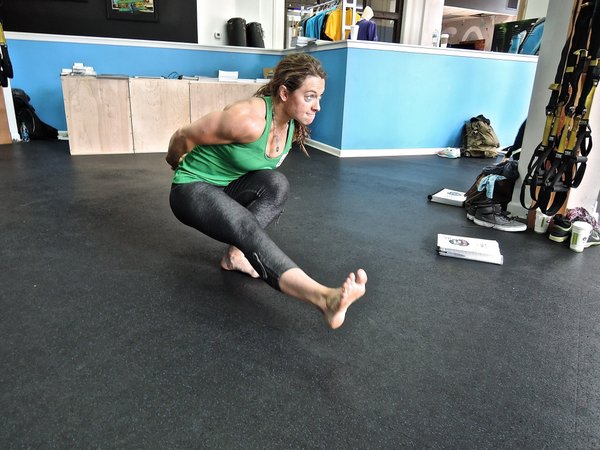
What?! Total freedom of movement! When was the last time you truly experienced that? If you’ve attended the PCC or practice single limb exercises, you’ve been there even if only for a brief moment. If you’ve played sports you’ve been there, if you’re intently reading this article you’ve been there. Even if you’ve never attended a PCC, practiced single limb movements or played sports…you’ve been there! You’re human and at one point or other you’ve been an infant, toddler and child. Kids live without conscious thinking for the first few months of their lives. They’re fearless and free with movement. Adults teach them safety and other laws of society essential for surviving. Unfortunately, we don’t always pay much attention to the upkeep of our freedom to move as we age.
The good news? You’ve already surfed the Alpha waves so you can surf them again. To begin, I recommend picking up Paul Wade’s Convict Conditioning. Follow the simple progressions and don’t rush. Enjoy the slow but steady progress you’ll make following the simple movements, which will add up! Also, practice some meditative movements. This can be a simple task of washing the dishes slowly and quietly, walking around the house without stomping, and closing a door without letting it slam. These meditative movements will easily transfer to smooth calisthenics and strength training.
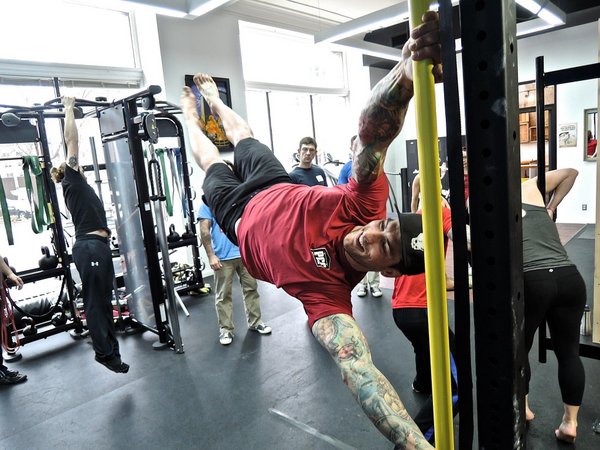
***
PCC Instructor and RKC Team Leader Nick Lynch is a Strength and Conditioning Coach at Milwaukee School of Engineering University (MSOE). He owns Superb Health Milwaukee, a kettlebell studio in Milwaukee, WI. He has 13 years of full-time training and coaching experience and a lifetime of wellness education. Nick lives in Milwaukee, WI with his wife Natalie and son Weston.
